Optical illusions and the human eye

What is an optical illusion?
An optical illusion is a trick the eyes play on the brain — an error in the brain’s interpretation of information the eyes provide. Because the world is in three dimensions, and an optical illusion is usually only in two dimensions, the brain is tricked by the signals the eyes send.
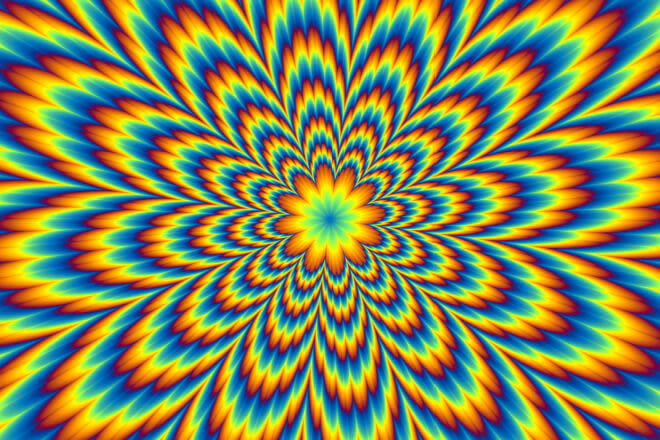
Optical illusion of movement.
No one is quite sure why people’s brains are deceived by these illusions. There are several theories regarding why optical illusions work. One is that rapid eye movements between fixation points — called saccades — can sometimes trick the brain into falsely perceiving movement.
Another theory is that your brain constantly tries to make connections and predictions. Although this is extremely useful for survival, misinterpretations can result when reality does not match your brain’s prediction or expectation.
Another possibility is that your visual pathways are overloaded by information from an illusion, confusing your brain.
All in all, the brain is wired to collect visual data, process it, and make predictions by filling in gaps of missing information. This type of processing has evolved to help humans thrive in a chaotic and often unpredictable environment. In the case of optical illusions, it also provides some fun and entertainment.
How do optical illusions work?
Illusions work because the part of the brain that controls vision misinterprets signals the eyes send. When you look at an optical illusion, the light waves reflect off the picture and travel to the back of each eye to the retina, the tissue that perceives light and converts it into signals for the brain.
Your brain uses signals from the retina to make conclusions about what you are looking at and form a mental image. This process is called visualization. Sometimes, when the brain interprets a two-dimensional image as three-dimensional, it can trigger an optical illusion.
A fascinating aspect of your brain is that once it understands the illusion, it can no longer be deceived. So once you figure out why an illusion tricked you, it’s extremely difficult to be tricked again, even if you try.
How do the eyes and brain work together?
This is a very complex process, and scientists don’t fully understand the many complicated steps involved. Still, researchers have uncovered some of these pathways. Once the cells in the retina (called rods and cones) convert light into electrical signals, those signals are sent through the optic nerve to the brain’s visual cortex. This is the primary area in the brain where images are processed.
The visual cortex interprets the information your eyes send to form an image. Scientists think each nerve cell — or neuron — handles a particular aspect of an image. All the neurons work together to build your perception of your surroundings.
Some neurons provide a more dominant signal to the brain — sometimes falsely — which can influence how you perceive things.
It is believed that the processing of visual information may be categorized in two ways:
Bottom-up – Your sight provides visual information, and the brain interprets what you see as it actually is.
Top-down – When you see something familiar, your brain creates a mental image based on the visual information you just received. Top-down uses memories to fill in any gaps in your field of view.
The ways that your brain fills in the gaps and makes predictions are not all based on eye anatomy and brain anatomy. Sometimes, they can be based on your cultural understanding of the world and what you have learned about shapes and images during your lifetime.
Types of illusions
There are three main categories of optical illusions: literal, physiological and cognitive. Each takes advantage of different aspects of the eye-brain connection.
Literal optical illusions
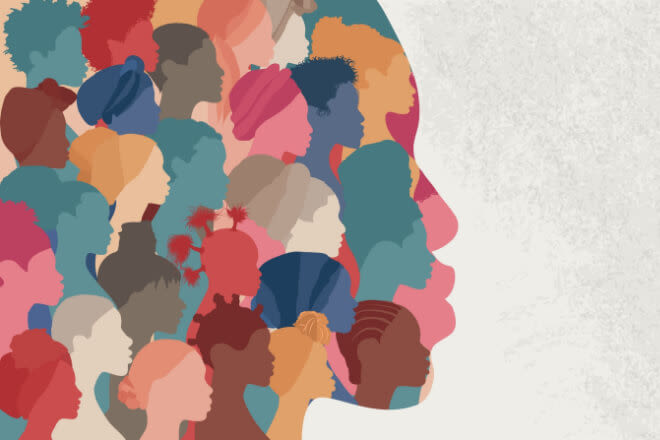
Literal optical illusion.
Literal optical illusions are frequently created by combining several different images. Each separate image is clear on its own, but if you shift your focus to the overall figure, the combination of images results in an entirely different image.
When light signals are sent to the brain, the brain chooses which portions of the visual information from the eye to concentrate on. So, it can focus on the separate unique images or the larger image as a whole. The brain is doing what is known as known as "filling in."
Physiological illusions
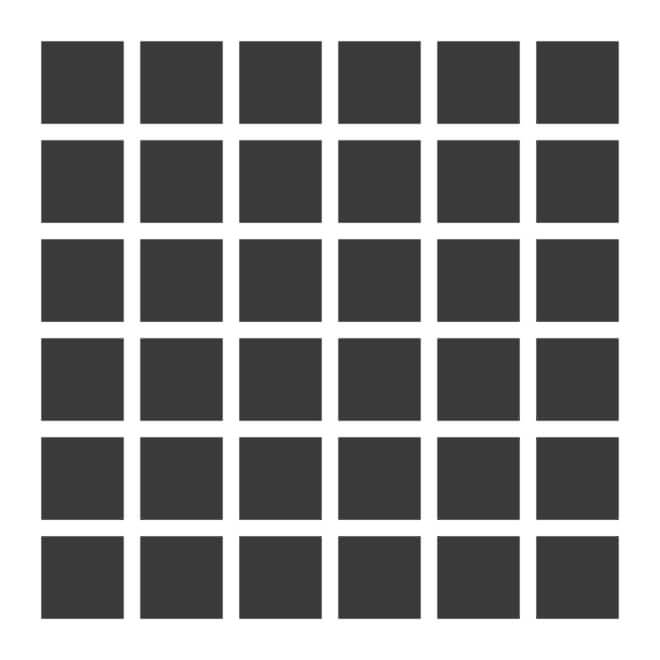
The Herman Grid Illusion.
Physiological illusions are especially tricky — they cause you to see elements of a picture that aren’t there. A repeating pattern overloads the visual system by triggering the same neural pathway, creating the illusion that an image is present when it actually isn’t. As a result, wherever your eyes land on a picture, you see a version of the repeating image.
The Herman Grid Illusion is a classic physiological illusion. The picture has grids of black boxes and white lines. Look between the boxes where the white lines intersect and you will notice faint sphere-like images. This illusion exploits the visual system's ability to process information for contrasting hues.
Cognitive Illusions
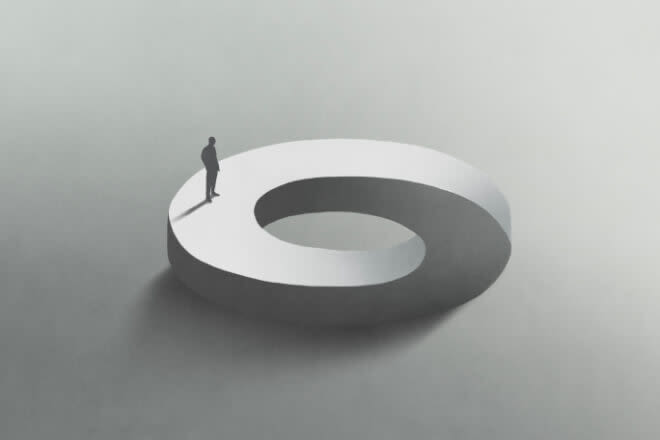
This circular path is an example of a cognitive illusion. The shape is impossible to trace with your eyes because if you try to follow one side, it will bring you to all the other sides.
Cognitive illusions depend on your perception of the environment and they can be influenced by your subconscious. They challenge your beliefs about the appearance of objects in the world around you.
Art and optical illusions
Artists take advantage of the tricks that the eyes can play on the brain to create optical illusions.
One of the most famous artists known for including illusions in his work is M.C. Escher.
Another well-known optical illusion is by psychologist Edwin Boring in his painting, "My Wife and My Mother-in-Law." The picture presents both a young woman and an old lady, but what you see at first glance depends on your expectations and perceptions.
Artists play with many different aspects of visual processing to distort your impressions. They utilize techniques that impact:
Color
Depth
Form
Brightness
Shadows
Texture
By manipulating these aspects of an illustration, artists can distort your perception of an image. Examples of this visual manipulation include:
Speed

Example: Speed
Fixed images with a fuzzy appearance are interpreted as moving rapidly because your brain associates blurry images with movement.
Size
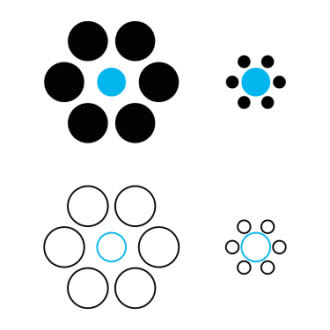
Ebbinghaus illusion.
The Ebbinghaus illusion, also known as the Titchener circles, plays with your perception of an object's size.
How you perceive two circles of the same size can be influenced by whether each is surrounded with bigger or smaller circles. The circle surrounded by bigger circles will typically appear smaller than the one surrounded by smaller circles.
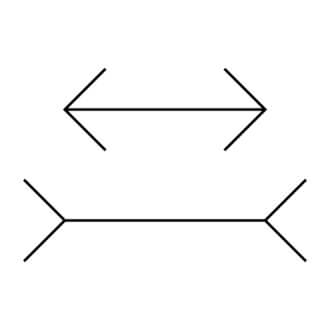
Müller-Lyer illusion.
The Müller-Lyer illusion causes lines of the same length to appear different simply due to the direction of the arrows.
Shadows

Example: Shadows
Shadows create depth, and shading is a highly effective way to convey information that translates a two-dimensional picture into a three-dimensional image for the brain. Shadows can also be placed in unexpected patterns to trick the brain.
Dimension

Example: Dimension
Size and distance can be manipulated by using converging lines to represent parallel lines over a great distance. This is the classic scene of train tracks disappearing into the horizon.
Optical illusions vs. hallucinations
An optical illusion is the misinterpretation of images that are seen. A hallucination, on the other hand, is the perception of something that is not there. This is sometimes normal, such as if you are waking from a deep sleep or falling asleep.
But in some cases, hallucinations can indicate a serious underlying health condition. For instance, drug side effects, dementia, schizophrenia and/or seizures can sometimes cause hallucinations.
Some conditions may cause you to see flashing lights that can appear as lightning, zigzag lines or spark-like images. This is known as photopsia. It can be caused by a migraine or something more serious, such as a retinal detachment or an eye or brain injury.
If someone is experiencing visual distortions or hallucinations, they should seek the advice of a medical professional as soon as possible.
Optical illusions are an interesting way to learn how your eyes and brain work together to provide information about the world around you — not to mention a fascinating and fun trick your eyes play on your brain.
Optical illusions and how they work. American Museum of Natural History. Accessed December 2023.
New research to understand how the brain handles optical illusions and makes predictions. Allen Institute. May 2022.
How does an optical illusion work? Queensland Brain Institute, University of Queensland. August 2022.
The 3 types of optical illusions are a beautiful union of science and art. Big Think. October 2022.
Illusions. National Institute of Environmental Health Sciences. February 2019.
Hallucinations. Cleveland Clinic. June 2022.
Page published on Wednesday, December 6, 2023
Page updated on Tuesday, December 12, 2023






